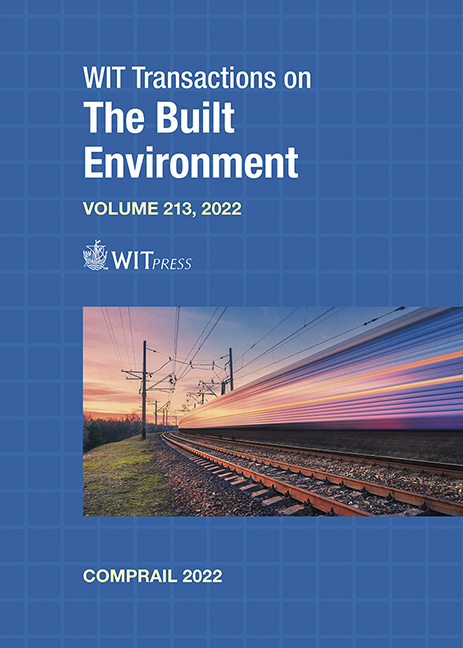ANALYSIS OF TRAM COMFORT USING THE UNE EN 12299:2010 STANDARD AND SPERLING METHOD (WZ)
Price
Free (open access)
Transaction
Volume
213
Pages
11
Page Range
3 - 13
Published
2022
Paper DOI
10.2495/CR220011
Copyright
Author(s)
GINA NOVILLO, NÉSTOR RIVERA, CÉSAR RICARDO SOTO-OCAMPO, JOSÉ MANUEL MERA
Abstract
Vibration is a main factor in the driving comfort contribution and can affect the human body by being transmitted through the seats and backrests. The vibrations produced in transport are transferred to the human body, affecting passenger comfort in terms of physical health (amplitude, duration, frequency range) and psychological health (type of population, sex, age). Transport comfort is governed by evaluation tests, ISO 2631-1:1997 standard evaluates human exposure to vibrations, UNE EN 12299 standard is based on the previous one, allowing the evaluation of user comfort by calculating the average and continuous comfort index. Acquisition of acceleration data on the x,y,z axes is weighted in frequency with respect to its direction and weighting curves as a rule. Root mean square values (continuous comforts) are obtained, and the 50th and 95th percentiles for the subsequent calculation of mean comfort. The Sperling method obtains the ride quality and users comfort according to weights. The data has been extracted by the Freematics One+ device at various tram locations. The EN 12299 standard studies the acceleration behaviour (x,y,z), time, latitude, longitude, speed. It is possible to calculate the comfort index of the tram by means of norms and the Sperling method. The data was processed in Matlab obtaining favourable values in the two experimental trials, indicating that the tram in the city of Cuenca, Ecuador is very comfortable and the vibrations produced are slightly perceived by users.
Keywords
acceleration, accelerometer, comfort, EN 12299, frequency, Freematics, percentile, railway, Sperling, tram, vibrations, weighing





